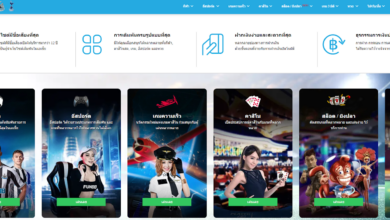Transforming Business Landscapes: A Comprehensive Guide to Enterprise VR Headsets

The contemporary corporate world is witnessing a transformation unlike any other, with technology playing a pivotal role in this shift. One piece of technology that stands out in the pack is the business VR headset, a tool that’s changing the way we work, communicate, and train in the enterprise world. This comprehensive guide will take you through the landscape of enterprise VR headsets, exploring their features, capabilities, and the unique advantages they offer for businesses today.
Virtual reality (VR), formerly limited to video games and entertainment, has found a business home. According to the Harvard Business Review, virtual reality (VR) adds new dimensions to business processes, allowing organizations to teach personnel, design goods, and even convene in virtual worlds. The VR headset, an immersive instrument that enables interactive, 3D experiences, is at the heart of this transformation.
Technology titans such as Oculus and HTC, who have built VR headsets specialized for enterprise use, have fueled the expansion of VR in business. These gadgets have high-resolution displays, 360-degree tracking, and integrated audio technology. Some models also include eye-tracking and gesture recognition, providing a level of involvement that is difficult to match with traditional technology.
The ability to give immersive training and simulation is one of the key benefits of adopting corporate VR headsets. According to PwC research, VR training boosts learning efficiency, with learners finishing training four times faster than in the classroom. This means that complex procedures, safety precautions, or customer service scenarios can be practiced in a safe, controlled setting before being implemented in the real world.
Furthermore, virtual reality (VR) is creating waves in product design and prototyping. Businesses can generate 3D models of their products to test, tweak, and perfect designs before going into production. This not only speeds up the design process but also lowers expenses and has a lower environmental impact.
Another major commercial application for VR headsets is remote collaboration. According to Forbes, virtual reality provides a remedy to the ‘Zoom fatigue‘ that many employees feel with regular video conferencing. Teams may meet in virtual spaces with VR, promoting a sense of presence and participation that is difficult to accomplish in flat, 2D meetings.
Furthermore, businesses are eager to capitalize on VR’s capacity to create a personalized experience. Retailers, for example, employ virtual reality headsets to provide virtual store tours that allow visitors to browse merchandise as if they were physically there in the store.
Despite these various advantages, it is critical to recognize the hurdles associated with VR adoption. Cost, technological know-how, and motion sickness are all possible roadblocks that businesses must overcome. However, as technology advances and adoption increases, these barriers are projected to disappear.
The effects of virtual reality in business are not restricted to internal procedures; they also have a significant impact on customer experiences. For example, the real estate industry employs VR headsets to provide potential purchasers virtual tours of houses, even those that are currently under development. This capacity to envision an area without physically being present removes geographical constraints and improves the client experience.
Another business that is benefiting immensely from VR technology is healthcare. VR headsets are used by medical personnel to simulate procedures for training purposes, providing them with a risk-free environment in which to learn and refine their skills. Patients can use VR for therapeutic objectives such as pain management and rehabilitation exercises, in addition to doctors.
Finally, business VR headsets are more than just a technological gimmick. They mark a significant shift in the way organizations function and engage with their employees and customers. These game-changing technologies provide businesses with a new approach to train, develop, and compete in a fast-changing economy. As technology progresses and the benefits of VR become more apparent, expect even more exciting innovations in the future. This is the beginning of a new era in the corporate world, one in which virtual reality will play a pivotal role. The use of virtual reality technology in business is more than a fad; it is an investment in the future of business. It’s evident that the business VR revolution isn’t simply on the horizon; it’s already here and here to stay.










